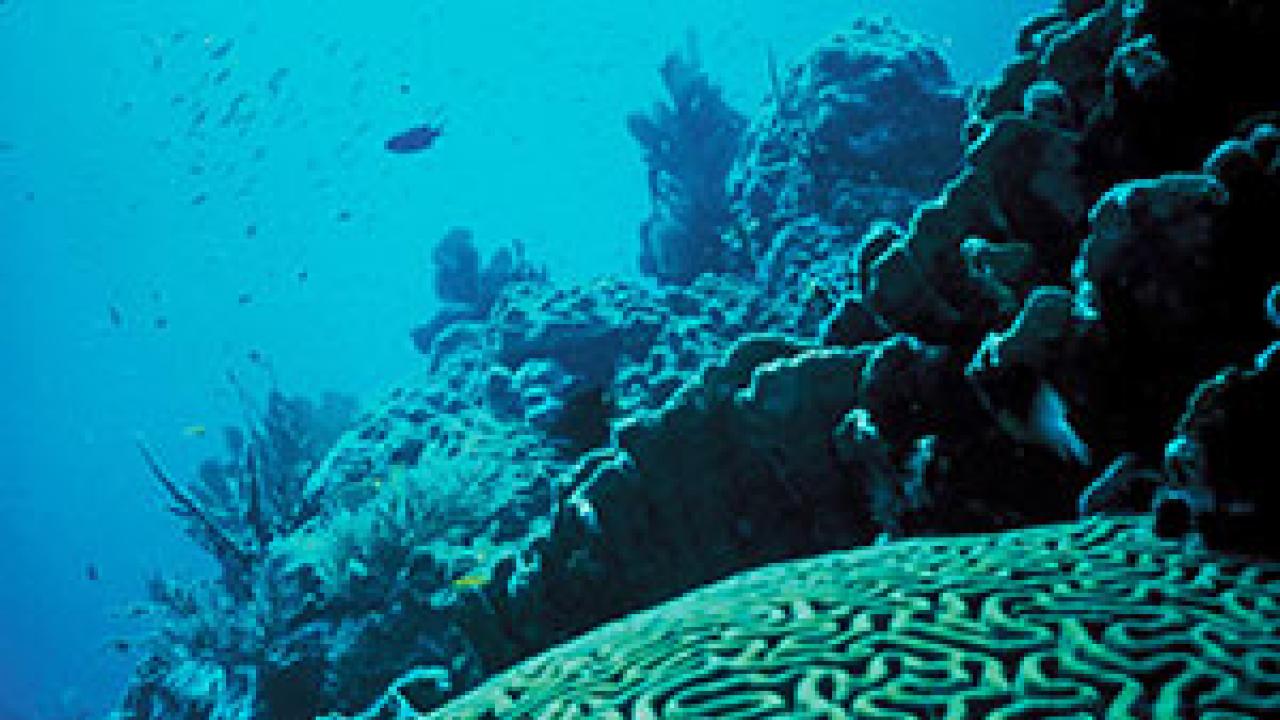
Ocean ecosystems are facing stress and strain from many sources, from acidification and pollution to warming and overfishing. Monitoring the overall effects of this strain is not an easy thing to do in complex ecological systems, and ecologists are always looking for better measurements of ecosystem damage and recovery. Recently, the field has been debating if there might be broad patterns consistent among all types of marine ecosystems, fundamental properties that could be found in both a reef and the open ocean. Stressed ecosystems present obvious symptoms--dead fish, sick whales, disappearing plankton--but an indicator of the health of an ecosystem as a whole, and not just pieces of it, would be very valuable.
A new paper in Trends in Ecology and Evolution asserts that all marine ecosystems do indeed share common traits, which can be used to assess the health of ocean ecosystems around the world. Work on the paper started when several coauthors noticed patterns in some of the data they were collecting from very different places. "The next step was to try to develop a theoretical framework able to explain the emergence of the common pattern, and possibly derive a mathematical description of such a framework," says Cosimo Solidoro, a researcher at ICTP and Italy's National Institute of Oceanography and Experimental Geophysics who specializes in ecological modeling and co-authored the paper.
Focusing on properties that all ecosystems share, the team considered how energy was flowing among the ecosystem's organisms. In practical terms, this means considering the ecosystem's biomass, the mass of all living organisms in an ecosystem at a given time; the biomass production, or how much the existing biomass was growing and producing more biomass; and a combination of this data with the information on who is eating what in the ecosystem, known as the trophic spectra. Trophic spectra capture and describe how mass and productivity vary along the continuum of predator-prey relationships from the smallest to the largest organisms of an ecosystem. Using trophic spectra allows for a whole-ecosystem approach, where you are not focussed on specific species, but instead on how everything is interconnected.
After analyzing data from more than 100 diverse ecosystems, the team found several specific curves that could consistently and accurately model the relationships between total biomass, biomass production, and trophic level in a wide range of different marine ecosystems. The emergent patterns formed consistent "hockey-stick" and S-shaped curves, regardless of the type of ecosystem. In addition, it was possible to see how damage or recovery to an ecosystem would shift the curve's shape. With this new framework, the researchers could also graph specific ecosystems' health over time, such as the Black Sea or the Gulf of Maine. Solidoro and coauthors are now working on the development of a theoretical model able to explain and predict the pattern, and hope to one day derive thresholds and levels of ecosystem strain or recovery using this model.
This whole-ecosystem measure of ecological strain can help decide if an area is overfished, determine what harm invasive species are having, or evaluate the cumulative effects of multiple stressors. Practical applications of the model are possible not only for conservationists, but also for environmental and fishery managers interested in monitoring the health of an ecosystem.
The paper, titled "Emergent Properties Delineate Marine Ecosystem Perturbation and Recovery", appears in the November 2015 (Volume 30, Issue 11) issue of Trends in Ecology and Evolution.
The study is a collaborative effort by a team of researchers representing institutions in six different countries led by a fisheries scientist from the US National Oceanic and Atmospheric Administration (NOAA).
--Kelsey Calhoun













